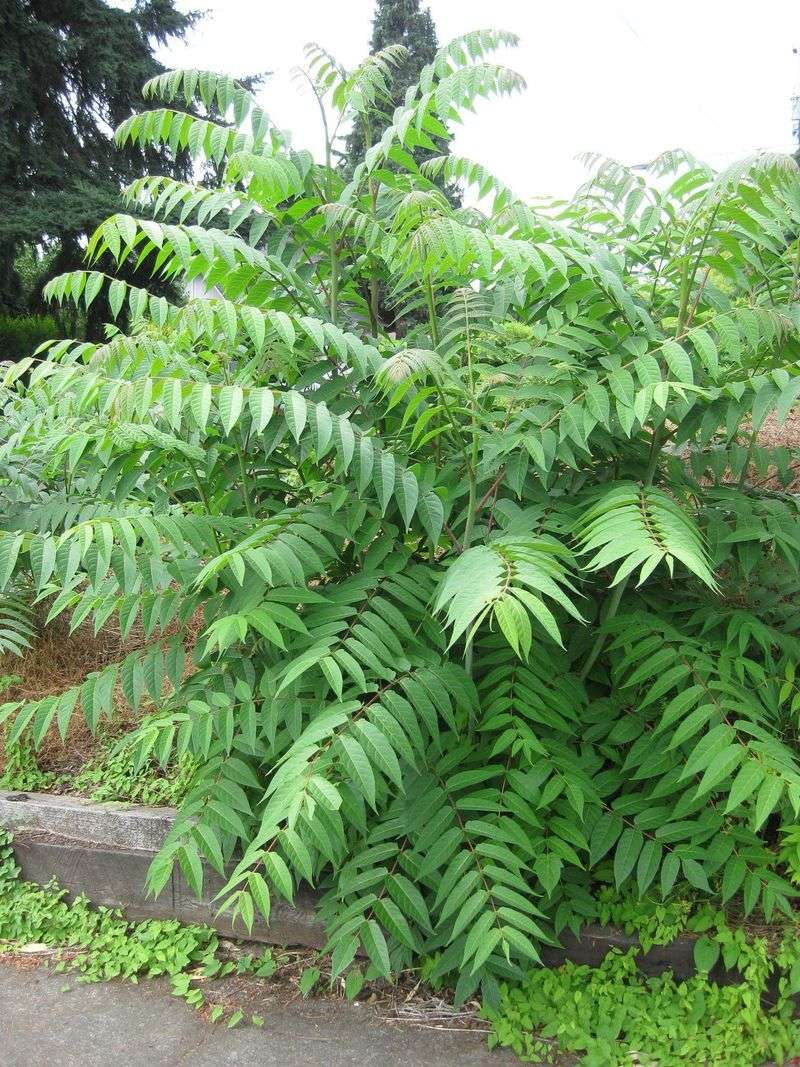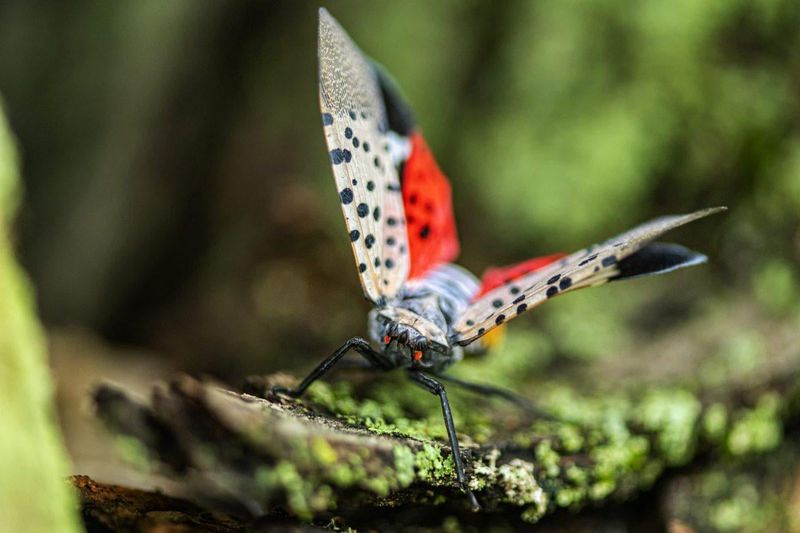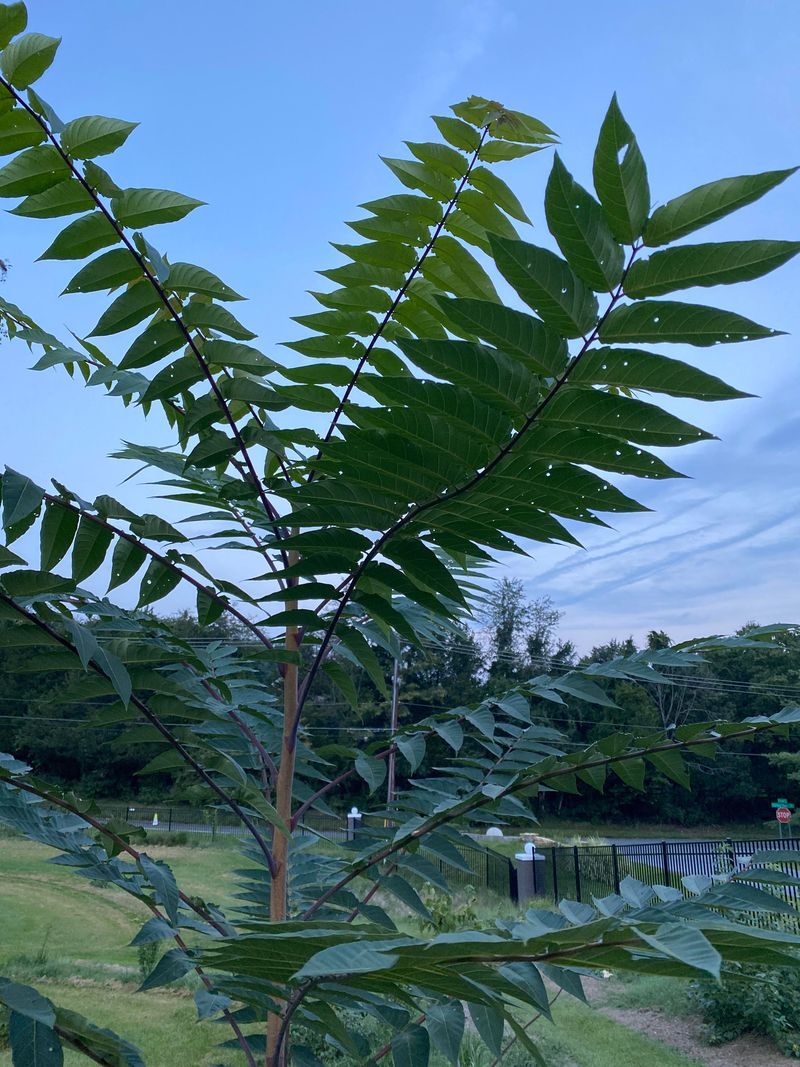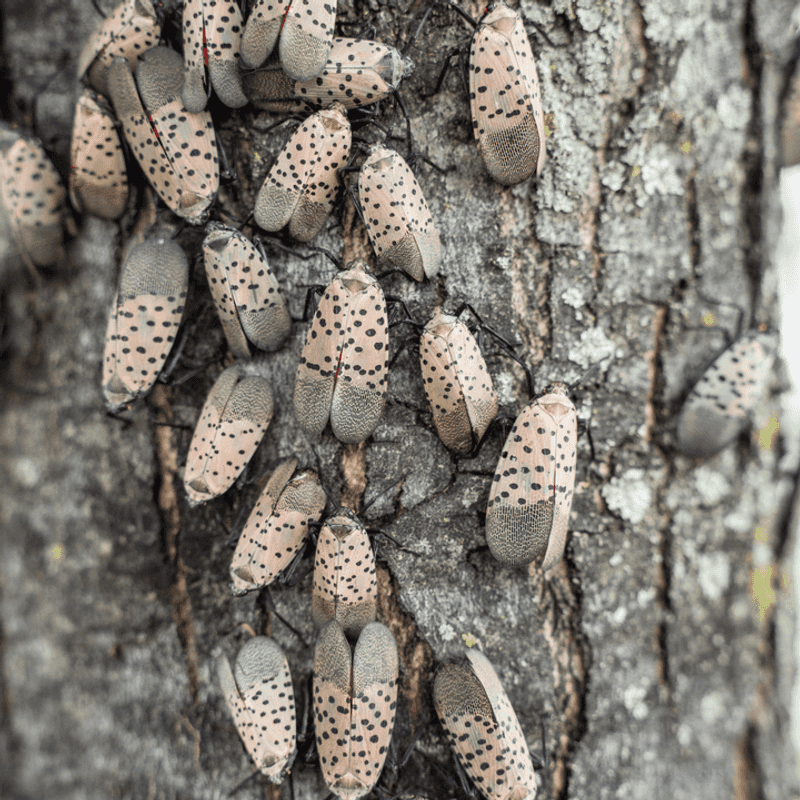Arizona gardeners face a real curveball from a certain troublesome tree, and its link to lanternflies raises the stakes. The Tree of Heaven acts like a magnet for the pests, giving them a foothold that quickly turns a calm yard into a full-blown headache.
Once lanternflies gain an inch, they take a mile, and the damage spreads faster than most folks expect. By steering clear of this invasive culprit, homeowners protect their landscape, wallets, and sanity.
1. Spotted Lanternflies Love This Tree As Their Host Plant
Spotted lanternflies have a favorite hangout spot, and it happens to be the Tree of Heaven. Female lanternflies lay their eggs directly on this tree’s bark, creating massive populations that spread quickly.
Once established, these insects multiply at alarming rates. A single female can lay up to 50 eggs at once, turning one tree into a breeding factory.
Without their preferred host plant around, lanternflies struggle to survive and reproduce. Removing this tree breaks their life cycle effectively.
2. Rapid Growth Creates Dense Infestations Quickly
Did you know the Tree of Heaven can grow up to six feet in a single year? This explosive growth rate means one sapling can become a towering problem before you realize what’s happening.
Fast growth attracts lanternflies faster than you can manage. More trees mean more bugs, creating an endless cycle of infestation.
Native Arizona plants grow slower but provide better long-term benefits. Choosing them over this invasive species protects your landscape naturally.
3. Damages Arizona Agriculture And Fruit Crops Severely
Arizona farmers work hard to grow grapes, peaches, and other valuable crops. Lanternflies threaten this livelihood by sucking sap from plants, weakening them until they wilt away.
When these pests feed, they excrete a sticky substance called honeydew. This gooey mess attracts mold that further damages plants and ruins harvests.
Preventing lanternflies starts with eliminating their favorite tree. Protecting agriculture means making smart planting choices now.
4. Crowds Out Native Arizona Plant Species
Arizona’s native plants evolved perfectly for the desert climate, providing food and shelter for local wildlife. The Tree of Heaven muscles in aggressively, stealing water, sunlight, and nutrients from these essential species.
Once established, it forms dense thickets that block out everything else. Native birds, insects, and animals lose their natural habitats.
Choosing native plants instead supports Arizona’s ecosystem balance beautifully.
5. Produces Toxic Chemicals That Harm Surrounding Plants
Nature usually plays fair, but the Tree of Heaven cheats. Its roots release toxic chemicals called ailanthone that poison the soil around it, preventing other plants from growing nearby.
This sneaky strategy is called allelopathy. Your beautiful garden flowers and vegetables simply can’t compete against these harmful substances.
Even after removal, the chemicals linger in soil for months. Avoiding this tree altogether saves you from costly soil remediation later.
6. Difficult And Expensive To Remove Once Established
Cutting down a Tree of Heaven sounds simple until you try it. The extensive root system spreads underground like a hidden network, sprouting new trees from every piece left behind.
Professional removal often requires herbicide treatments over multiple seasons. Costs can reach hundreds or thousands of dollars depending on infestation size.
Prevention beats cure every time. Planting something else saves money, effort, and future frustration completely.
7. Spreads Lanternfly Populations To Neighboring Properties
Your yard doesn’t exist in isolation. Lanternflies hop, crawl, and fly between properties, spreading infestations throughout entire neighborhoods rapidly.
When your Tree of Heaven hosts these pests, you’re unintentionally creating problems for everyone nearby. Community-wide infestations become nearly impossible to control.
Being a responsible neighbor means choosing plants that don’t harbor destructive insects. Everyone benefits from thoughtful landscaping decisions together.








